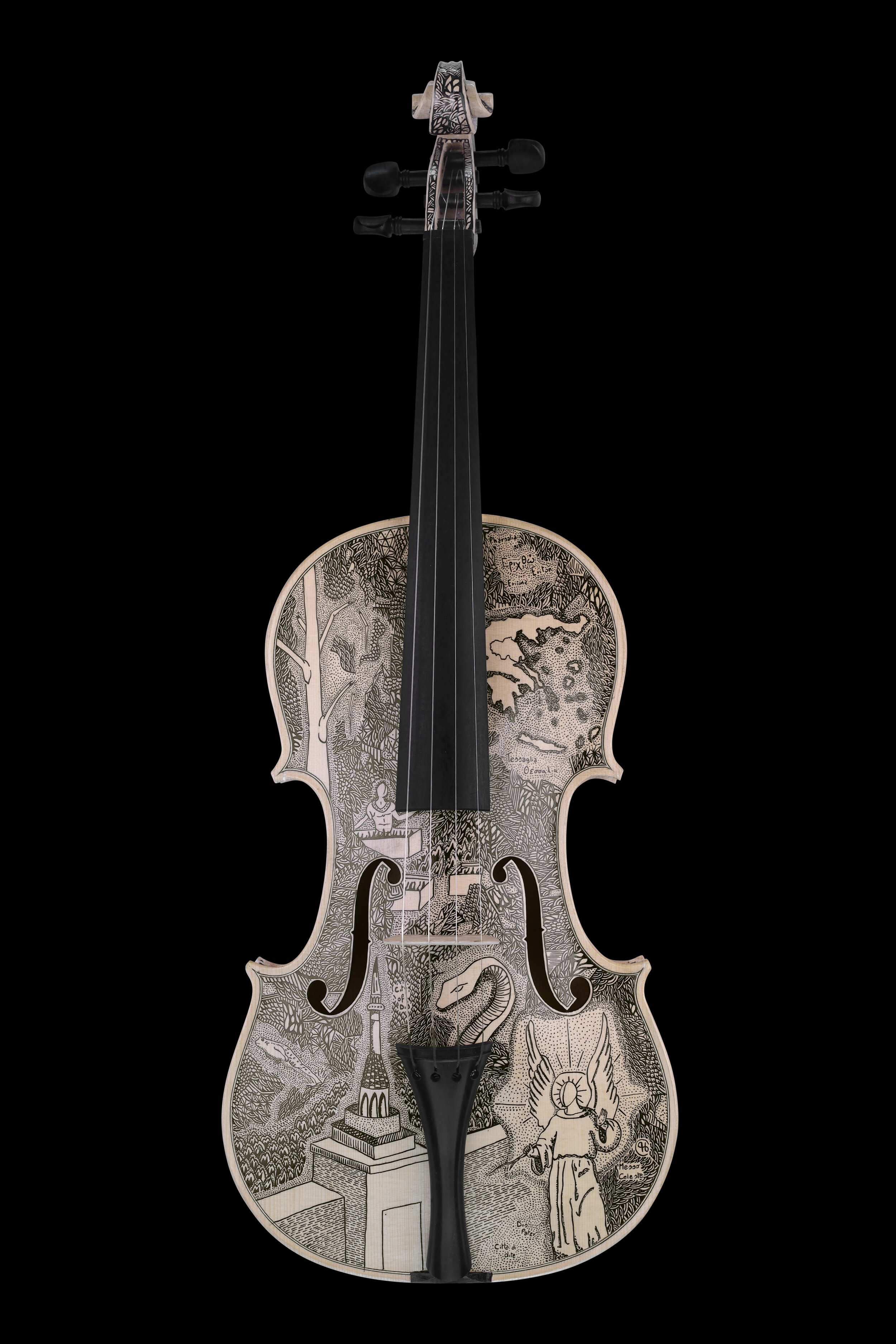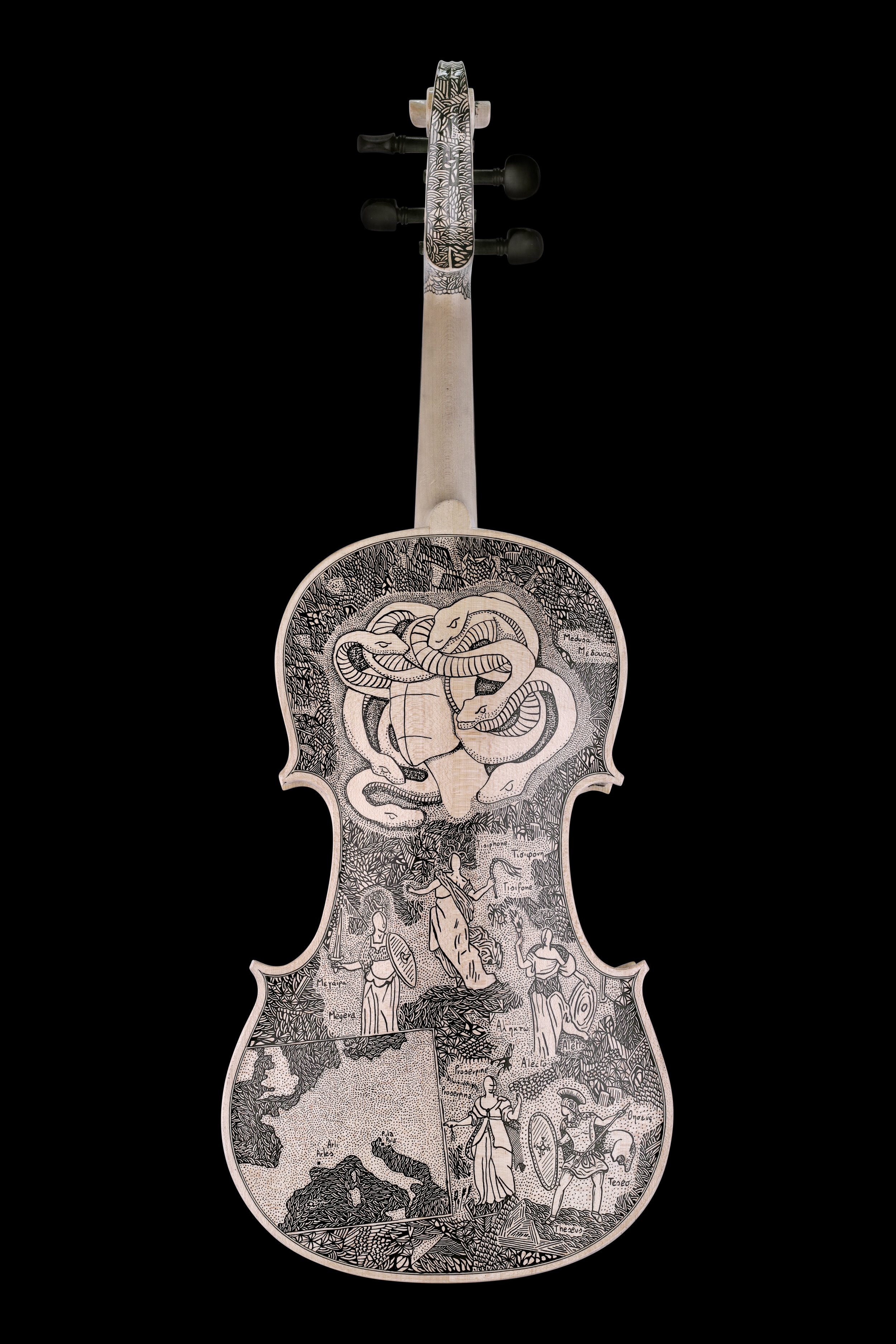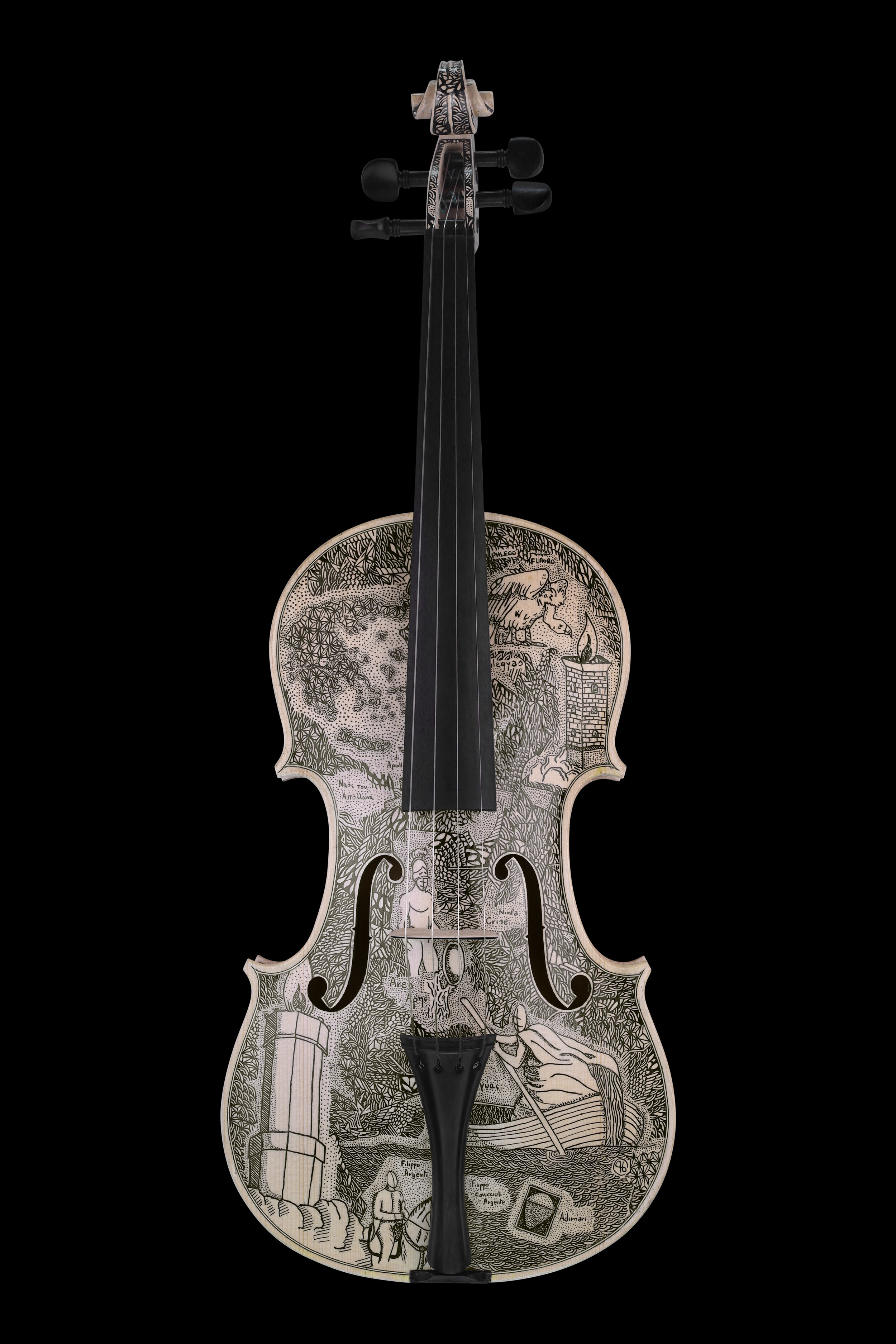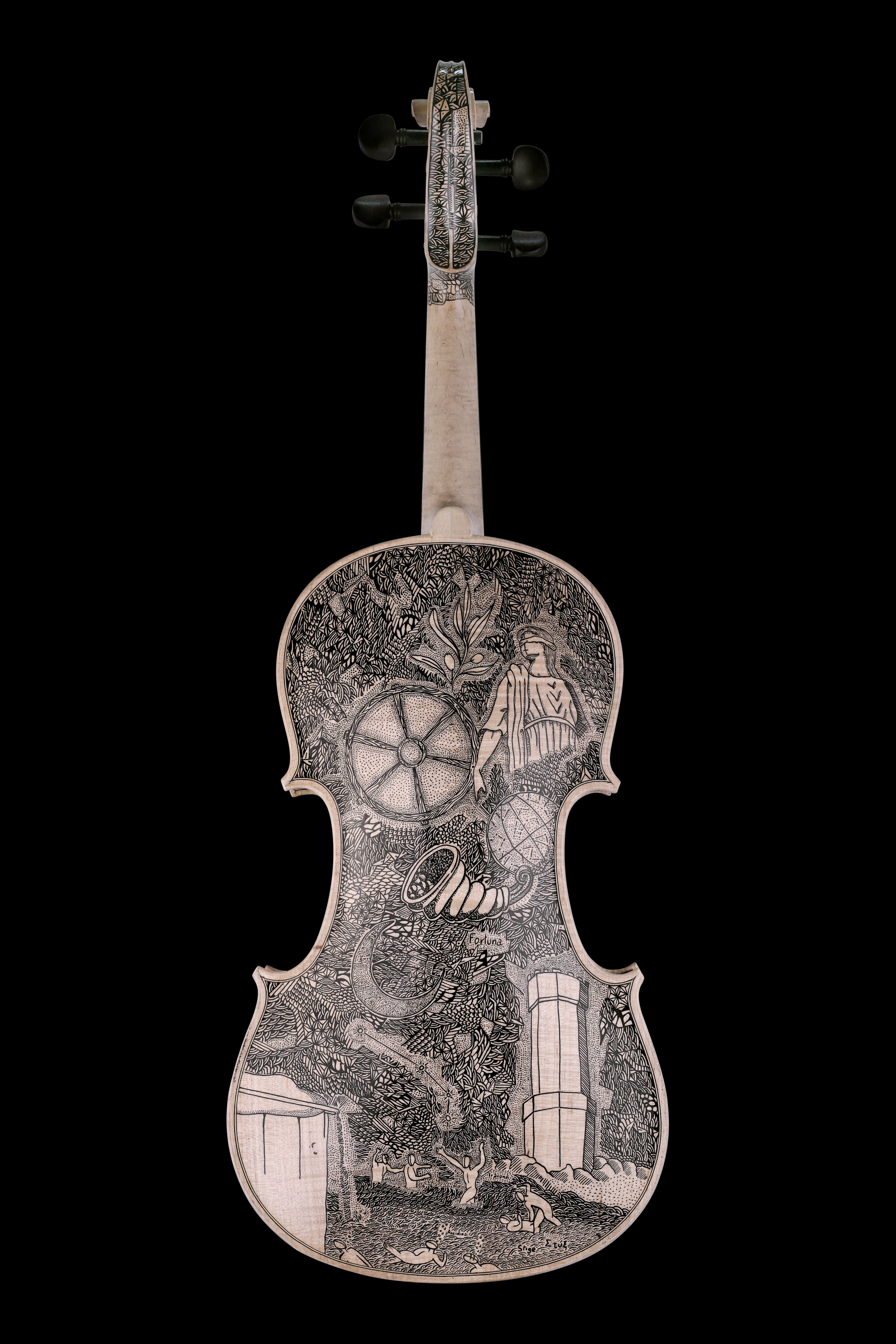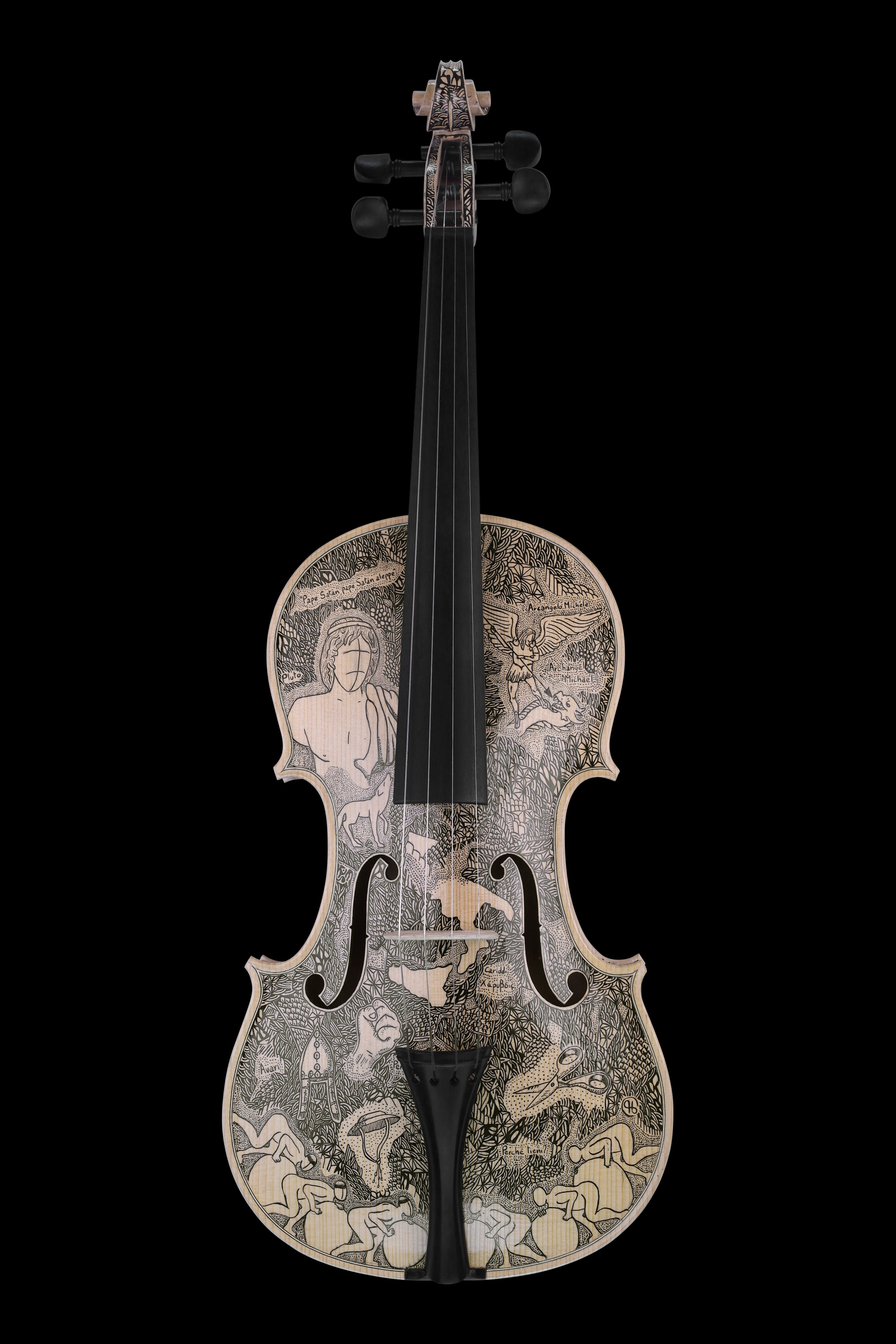Dante’s Inferno
"Dante Alighieri - Inferno" is a project completed in December 2020 after 5 years of work, conceived and developed by Leonardo Frigo. The visionary artist has managed to bring together music, poetry, design and craftsmanship in a single piece of art. We are talking about 34 musical instruments, 33 violins and 1 cello, on which Leonardo himself made the emblematic illustrations inspired by the first cantica of the Divine Comedy: Inferno (Hell). Each musical instrument is dedicated to a specific canto. On its surface, the violins show off symbols, scenes and key characters taken from the imagery of the poem written by Dante Alighieri hundreds of years ago.
Leonardo's work comes from a deep research that has roots in his passion for reading, for art and, in particular, for the of Dante’s masterpiece:
““Dante’s Inferno has always inspired me since I was a child, I can probably say that it taught me to imagine and dream.””
Therefore, after taking notes and annotations about each canto, Leonardo begins to search for symbols, names and illustrations that, put together, tell the story written by Dante. When the final design is clear in his mind, the extraordinary artist is ready to paint it by hand, in china, on the entire surface of the violin. The instrument is then varnished and installed on its base. But it does not end here: each violin is accompanied by an accurate descriptive text, both in Italian and in English, which highlights and analyzes all its details.
The aim
The project was carried out to celebrate the 700th anniversary of the death of Dante, that will fall in 2021.
The entire collection is not a simple result of a creative work, but comes from Leonardo's desire to share, promote and spread Italian culture all over the world and in a different way.
We often talk about "innovation" in reference to avant-garde means and technologies with which the contents are offered to the public, but innovation must also be sought in the ability to create new experiences capable of involving and presenting something through a different point of view. The beauty, the harmony and the passion that transpires from the mix of art, music and literature that takes shape through Leonardo's musical instruments has fully achieved this goal, allowing the viewer to study and read the cantos of the Divine Comedy in an alternative way.
Dante Alighieri (1265 – 1321)
Poet, writer, politician and intellectual man, Dante Alighieri was born in Florence (Italy) in 1265. As a young man he actively took part in the political activities of the Florentine municipality: during the struggles between the city factions, he sided with the White Guelphs. When the Black Guelphs seized power, they condemned him to the stake, which he avoided going into exile. He spent the last twenty years of his existence as an exile in some noble courts of central and northern Italy. He died in Ravenna in 1321.
Dante was the first great author of Italian literature. His works reflect the transition from the Middle Ages to the municipal civilization of which he felt the turmoil and the new cultural and social tensions. His masterpiece, the famous Divine Comedy, is an expression of the medieval theocentric concept according to which God was at the center of the existence: earthly life is conceived as a journey of redemption towards eternal salvation, towards God, the ultimate end and absolute perfection.
The Comedy Illuminating Florence by Domenico di Michelino
The Divine Comedy
The Divine Comedy is a poem in a hundred cantos divided into three cantiche, each of which is dedicated to one of the three otherworldly realms according to the principles of Christian doctrine: Inferno (Hell), Purgatorio (Purgatory), Paradiso (Paradise). In the introductory canto Dante, who is both narrator and protagonist, tells of having lost himself in a forest full of pitfalls, to which he manages to escape only thanks to the help of the Latin poet Virgil. He will guide Dante through the first two realms, while in Paradise the guide will be Beatrice. The journey, begun on Good Friday in the 1300s, takes place in seven days.
During the journey Dante encounters an innumerable series of characters from present or past history, from reality or myth, with which he is given the opportunity to converse. The journey culminates with the vision of God.
Inferno illustrated by Botticelli
Manoscritto Divina Commedia Vicenza
Dante’s Inferno
In Dante's vision, Hell is a chasm divided into nine circles, distinct (except the first one) according to the sins of incontinence, violence and fraud. The first circle is the so - called Limbo, where reside those who died unbaptized and the "great spirits" of the virtuous pagans who did not know the true God, but who practiced virtue before Christian revelation. In the second circle those who were incontinent in the loving instinct are damned, the lustful, swept away by the infernal storm. The third circle contains the souls of the greedy; in the fourth there are the misers and the prodigal, in the fifth the wrathful and the sullen; in the sixth the heretics. With this circle, the Lower Hell begins that separates the sinners of incontinence from those of malice.
In the seventh circle, divided in three rings, are punished the violent: in the firts ring violent against neighbors, in the second violent against self and, in the third, violent against God, art and nature. In the eighth circle, divided into ten Malebolgie, the fraudulent are damned: panderers and seducers, flatterers, simoniacs, sorcerers, barattors, hypocrites, thieves, counsellors of fraud, sowers of discord, falsifiers. In the ninth circle there are traitors, betrayers and outbreakers distinguished in four rounds: Caina, where the traitors to their kindred are punished; Antenora, in which traitors to their Country lie; Ptolomaea, where we find traitors to their guests; Giudecca, in which the traitors of their lords are damned.

